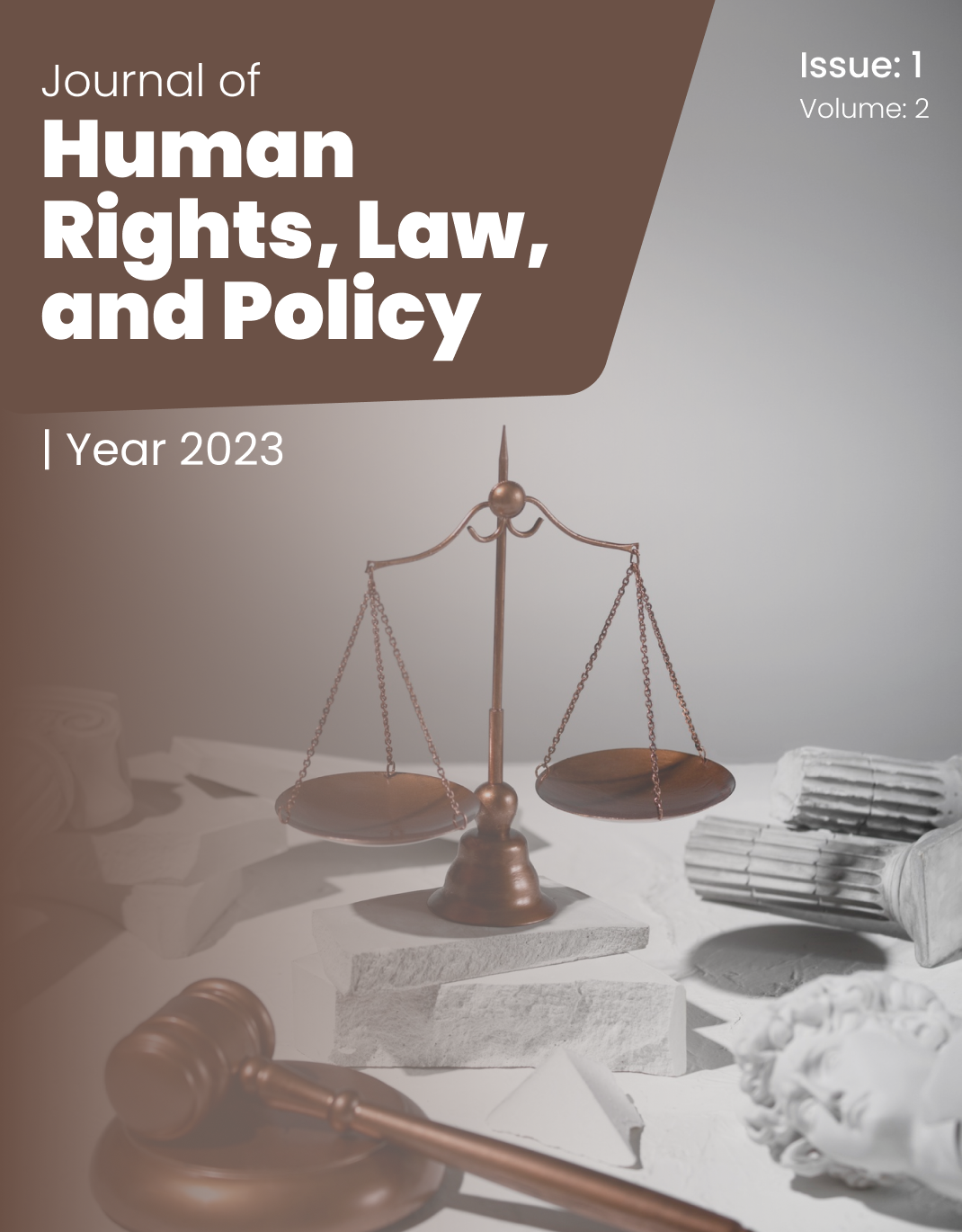The Intersection of Cultural Norms and Human Rights Law: A Qualitative Analysis of Marriage Practices
Keywords:
Marriage practices, cultural norms, human rights law, legal pluralism, gender equity, qualitative research, IranAbstract
This study aimed to explore how individuals in Tehran experience and navigate the intersection of cultural norms and human rights law within marriage practices. A qualitative research design was employed, utilizing semi-structured interviews with 14 participants selected through purposive sampling to capture diverse perspectives on marriage customs in Tehran. Participants included individuals with personal experience or professional insight into marriage practices influenced by cultural, legal, and religious frameworks. Data collection continued until theoretical saturation was reached. All interviews were audio-recorded, transcribed verbatim, and analyzed using NVivo software. A thematic analysis approach was used, following open, axial, and selective coding procedures to identify key patterns across narratives. Four main themes emerged from the data: (1) Cultural Expectations and Social Obligations, including family involvement, gendered expectations, and traditional rituals; (2) Legal Awareness and Perceived Rights, highlighting limited knowledge of legal protections, distrust of judicial institutions, and ambivalence toward international norms; (3) Gender Inequities and Power Relations, reflecting unequal agency in marital decisions and systemic barriers to legal empowerment; and (4) Transformation and Hybrid Norms, capturing the emergence of negotiated marriages, youth-led resistance, and the influence of education and social media. Participants described navigating conflicting normative systems, balancing tradition with evolving rights consciousness, and using informal strategies to assert agency. The study reveals that marriage in Tehran is shaped by the dynamic interplay of cultural tradition and human rights discourse, often resulting in tension, negotiation, or selective adaptation. Findings underscore the need for culturally grounded legal reforms, public legal education, and policies that promote gender equity while respecting cultural complexity.
Downloads
References
Afshari, R. (2001). Human rights in Iran: The abuse of cultural relativism. University of Pennsylvania Press.
CEDAW. (1979). Convention on the Elimination of All Forms of Discrimination against Women. United Nations. https://www.ohchr.org/en/instruments-mechanisms/instruments/convention-elimination-all-forms-discrimination-against-women
Cowan, J. K., Dembour, M.-B., & Wilson, R. A. (Eds.). (2001). Culture and rights: Anthropological perspectives. Cambridge University Press.
Engle Merry, S. (2001). Changing rights, changing culture. In Cowan, J. K., Dembour, M.-B., & Wilson, R. A. (Eds.), Culture and rights: Anthropological perspectives (pp. 31–55). Cambridge University Press.
Engle Merry, S. E. (2006). Human rights and gender violence: Translating international law into local justice. University of Chicago Press.
Freeman, M. A., Chinkin, C., & Rudolf, B. (2012). The UN Convention on the Elimination of All Forms of Discrimination Against Women: A commentary. Oxford University Press.
Goody, J. (1983). The development of the family and marriage in Europe. Cambridge University Press.
Griffiths, J. (1986). What is legal pluralism? Journal of Legal Pluralism and Unofficial Law, 18(24), 1–55.
Harris, K. (2017). A social revolution: Politics and the welfare state in Iran. University of California Press.
Hoodfar, H. (1996). Bargaining with fundamentalism: Women and the politics of population control in Iran. Reproductive Health Matters, 4(8), 30–40.
ICCPR. (1966). International Covenant on Civil and Political Rights. United Nations. https://www.ohchr.org/en/instruments-mechanisms/instruments/international-covenant-civil-and-political-rights
Kian-Thiébaut, A. (2002). Women and the making of civil society in post-Islamist Iran. Social Research, 69(2), 405–434.
Menski, W. (2006). Comparative law in a global context: The legal systems of Asia and Africa. Cambridge University Press.
Mir-Hosseini, Z. (2000). Marriage on trial: A study of Islamic family law in Iran and Morocco. I.B. Tauris.
Moghissi, H. (1999). Feminism and Islamic fundamentalism: The limits of postmodern analysis. Zed Books.
UNFPA. (2021). Child marriage in humanitarian settings: Spotlight on the Middle East and North Africa. https://www.unfpa.org
UN General Assembly. (1948). Universal Declaration of Human Rights. United Nations. https://www.un.org/en/about-us/universal-declaration-of-human-rights
UNICEF. (2022). Child marriage: Latest trends and projections. https://data.unicef.org/resources/child-marriage-latest-trends-and-future-prospects/
Downloads
Published
Submitted
Revised
Accepted
Issue
Section
License

This work is licensed under a Creative Commons Attribution-NonCommercial 4.0 International License.

